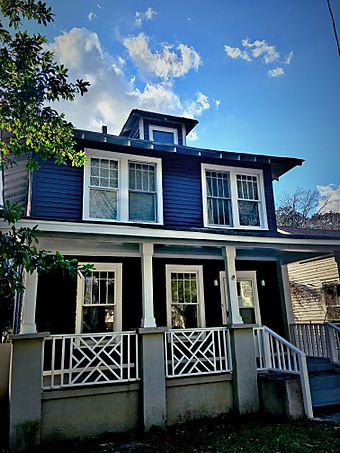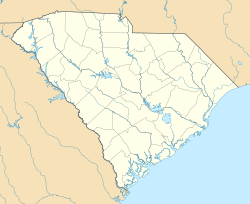Waverly Historic District (Columbia, South Carolina) facts for kids
Quick facts for kids |
|
|
Waverly Historic District
|
|
 |
|
| Location | Roughly bounded by Hampton St., Heidt St., Gervais St., and Harden St., Columbia, South Carolina |
|---|---|
| Area | 33 acres (13 ha) |
| Architect | Lankford, John Anderson; Wilson, Charles Coker |
| Architectural style | Late 19th And Early 20th Century American Movements, Late 19th And 20th Century Revivals |
| NRHP reference No. | 89002154 |
| Added to NRHP | December 21, 1989 |
The Waverly Historic District is a special neighborhood in Columbia, South Carolina. It is a historic district, which means its buildings and area are important to history. This district was one of the first neighborhoods built outside the main city of Columbia.
The homes here were mostly built between 1898 and 1925. They show off many different styles of architecture. Over time, Waverly changed from a mostly white neighborhood. It became a vibrant community for African-American artists, leaders, and people working for social change.
Contents
Discovering Waverly Historic District
Waverly Historic District is a unique place in Columbia, South Carolina. It covers about 33 acres of land. This area is like a time capsule, showing how neighborhoods grew long ago. It was officially added to the National Register of Historic Places in 1989. This honor helps protect its important history.
What Makes Waverly Special?
Waverly is special because it was one of Columbia's very first suburbs. A suburb is a neighborhood built just outside a main city. People started building homes here around 1898. The neighborhood continued to grow until about 1925.
The district has 132 buildings that are considered "contributing." This means they add to the historical importance of the area. These buildings help tell the story of Waverly.
A Look at the Homes
The homes in Waverly show many cool architectural styles. You can see how building designs changed over time. Some popular styles found here include:
- Queen Anne: These homes often have towers, turrets, and decorative details. They look very grand and unique.
- Colonial Revival: This style brings back ideas from early American colonial homes. They often have classic, balanced designs.
- Neoclassical: These houses look like ancient Greek or Roman temples. They often have large columns and grand entrances.
- Shotgun: These are long, narrow houses. They have rooms lined up one after another, from front to back.
- American Foursquare: These homes are usually square-shaped. They have a simple, sturdy design with a wide porch.
- Craftsman/Bungalow: These houses focus on natural materials and handmade details. They often have low-pitched roofs and wide eaves.
Who Designed These Buildings?
Some of the architects who helped shape Waverly include John Anderson Lankford and Charles Coker Wilson. They were important designers of their time. Their work helped create the beautiful look of the district.
A Community's Journey
Waverly has a rich and changing history. It started as a neighborhood mainly for white families. But over the years, it transformed into something different. It became a strong community for African-American people.
Many African-American artists, professionals, and social reformers lived here. These were people who worked to make society better. They helped shape the culture and future of Columbia. Their presence made Waverly a very important place for African-American history and culture in South Carolina.
The district's story shows how neighborhoods can change and grow. It highlights the strength and contributions of its residents. Waverly remains a proud symbol of its past and its people.



